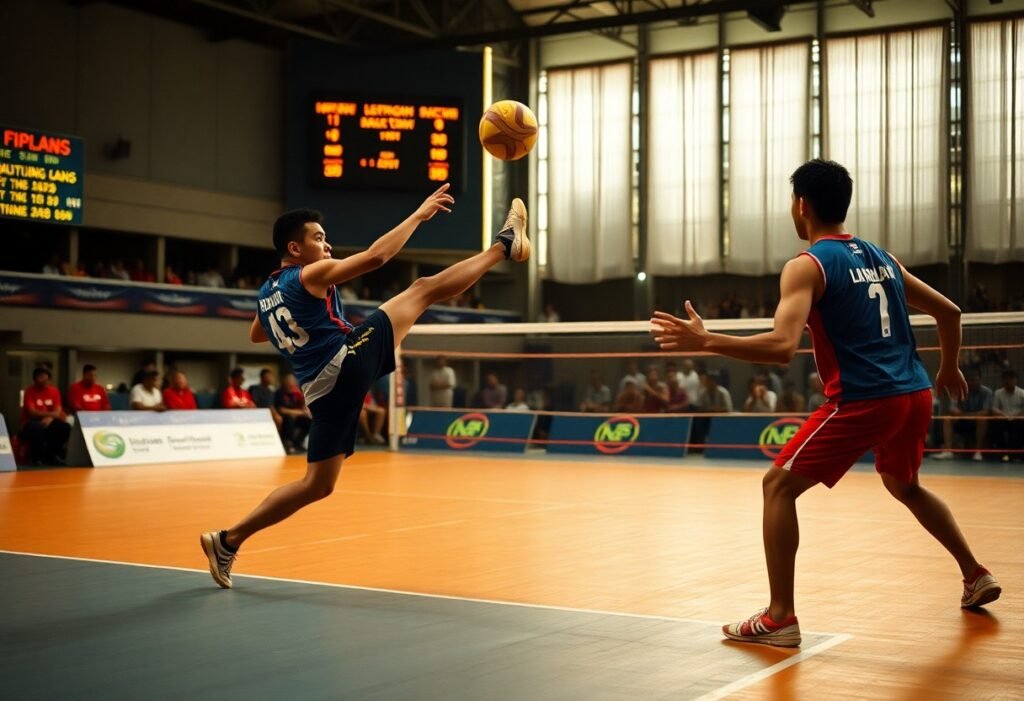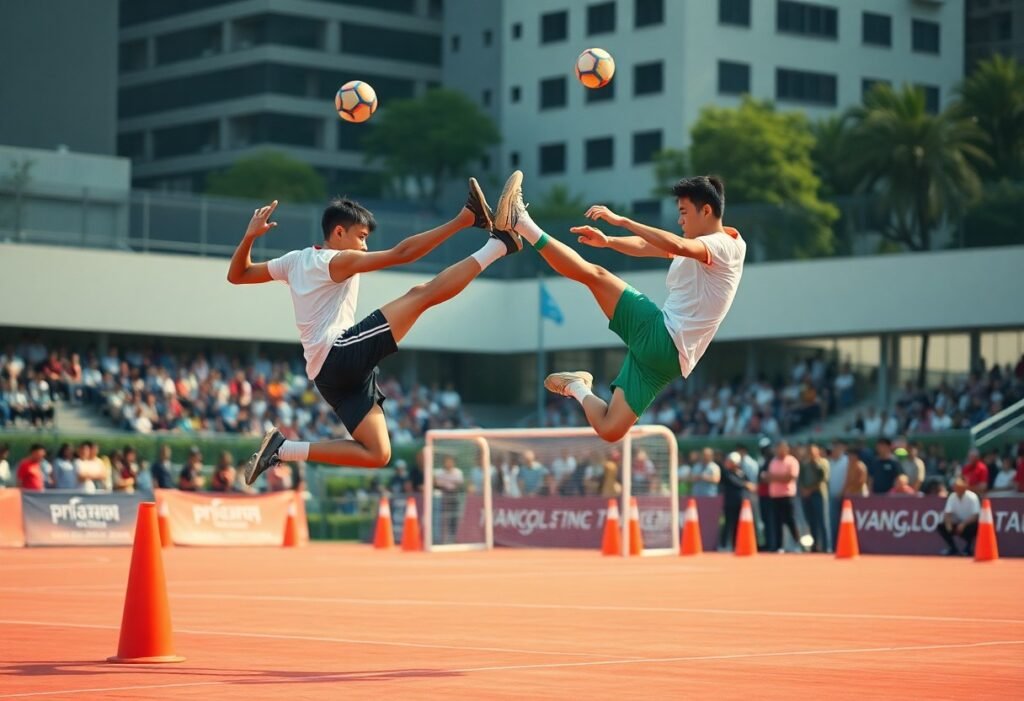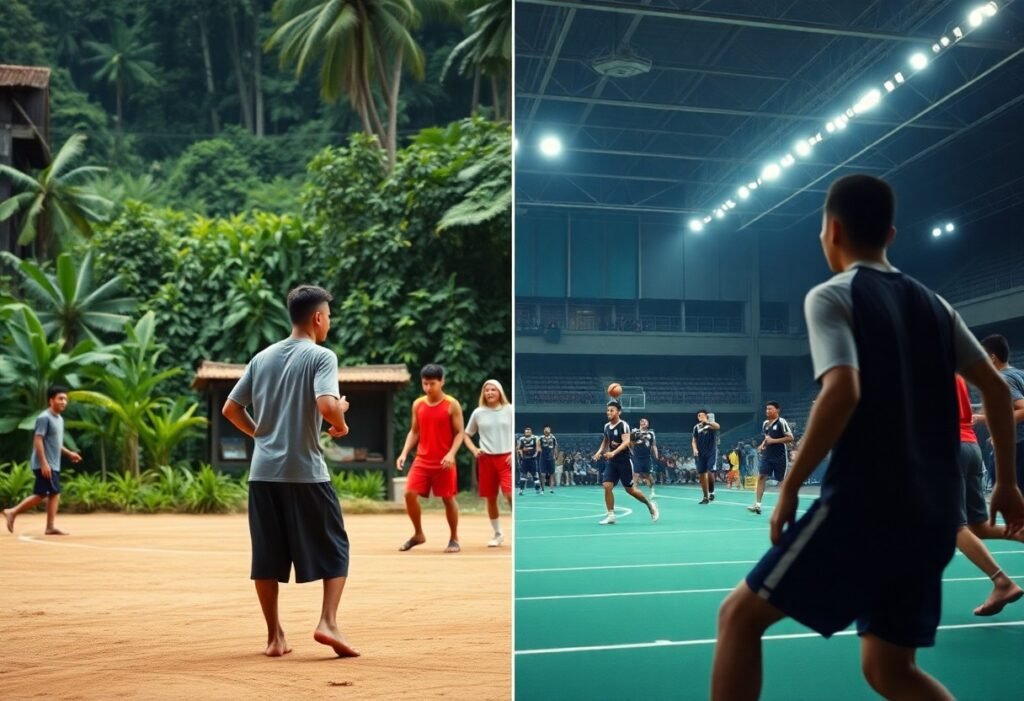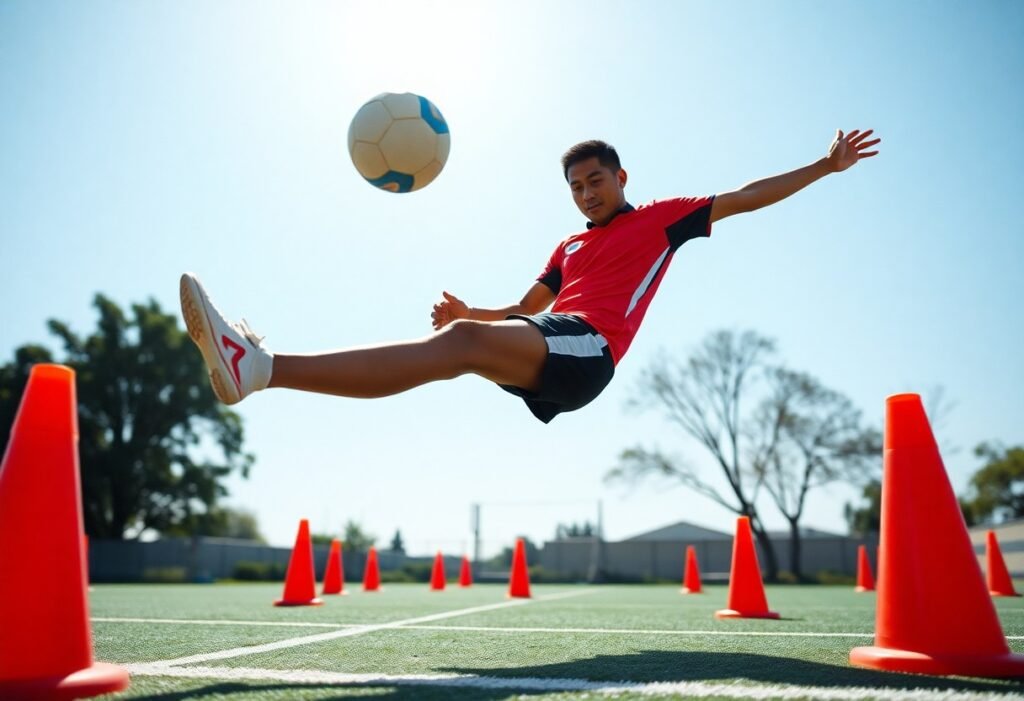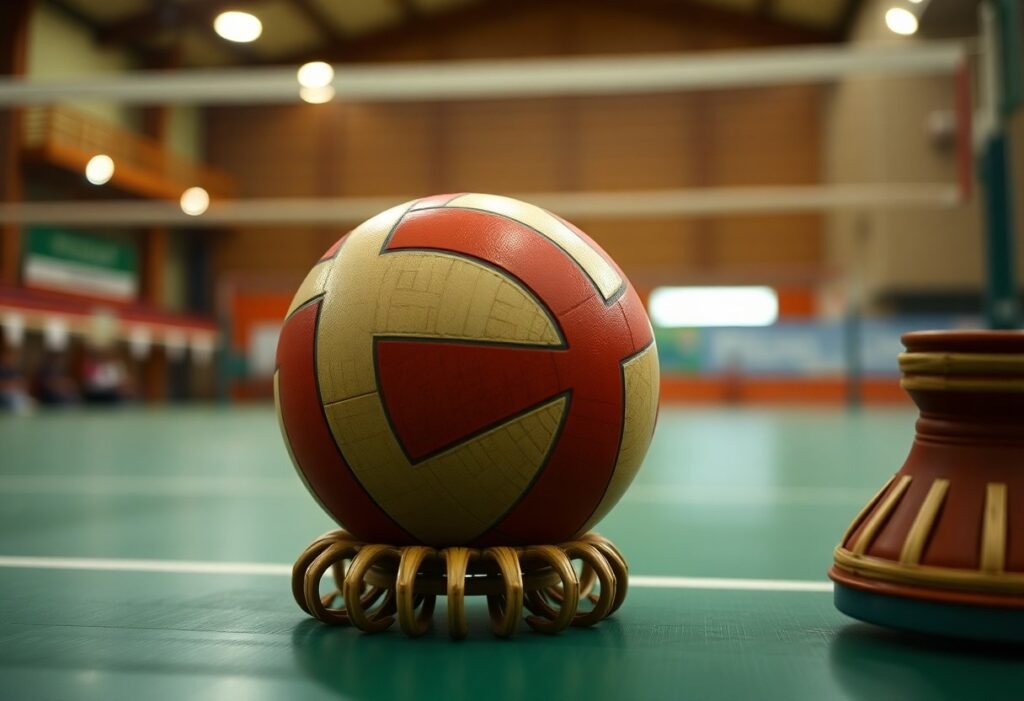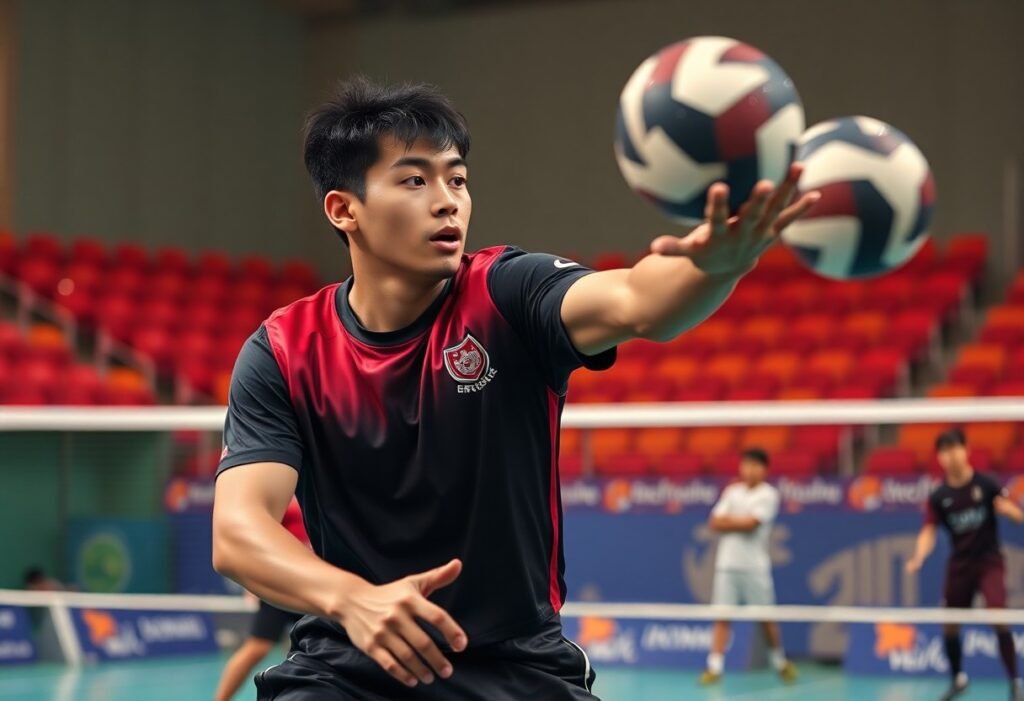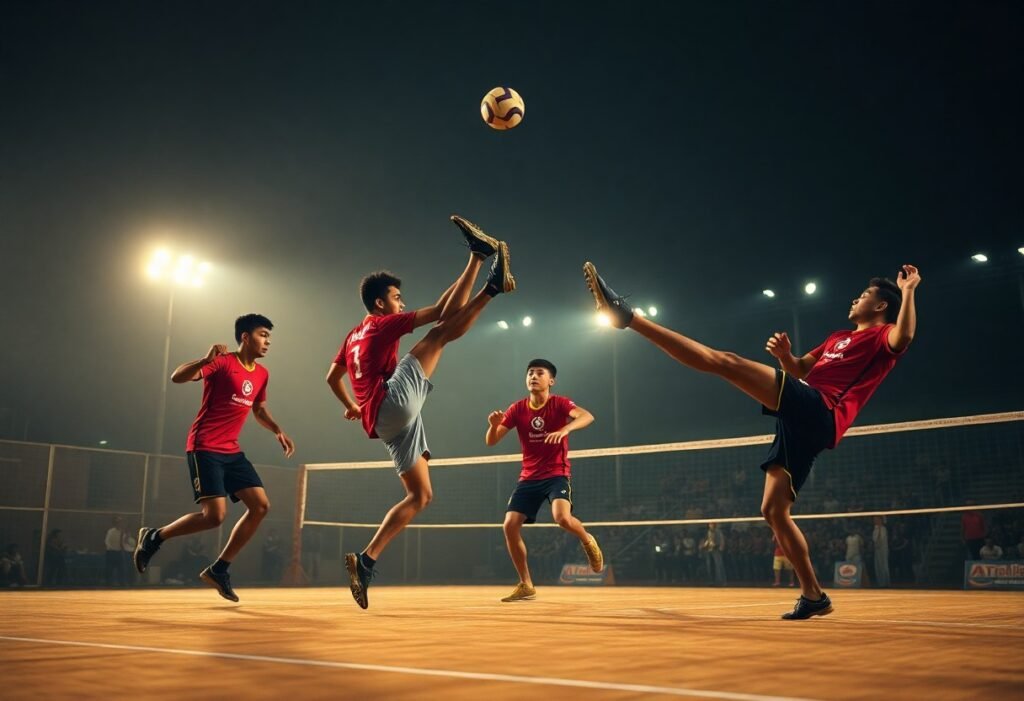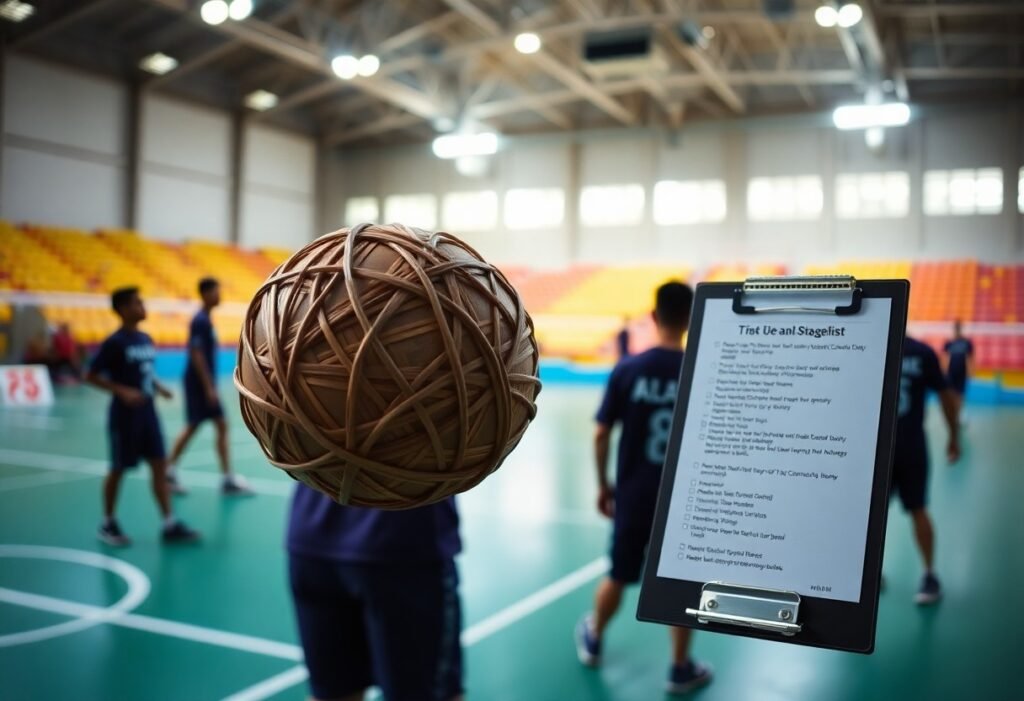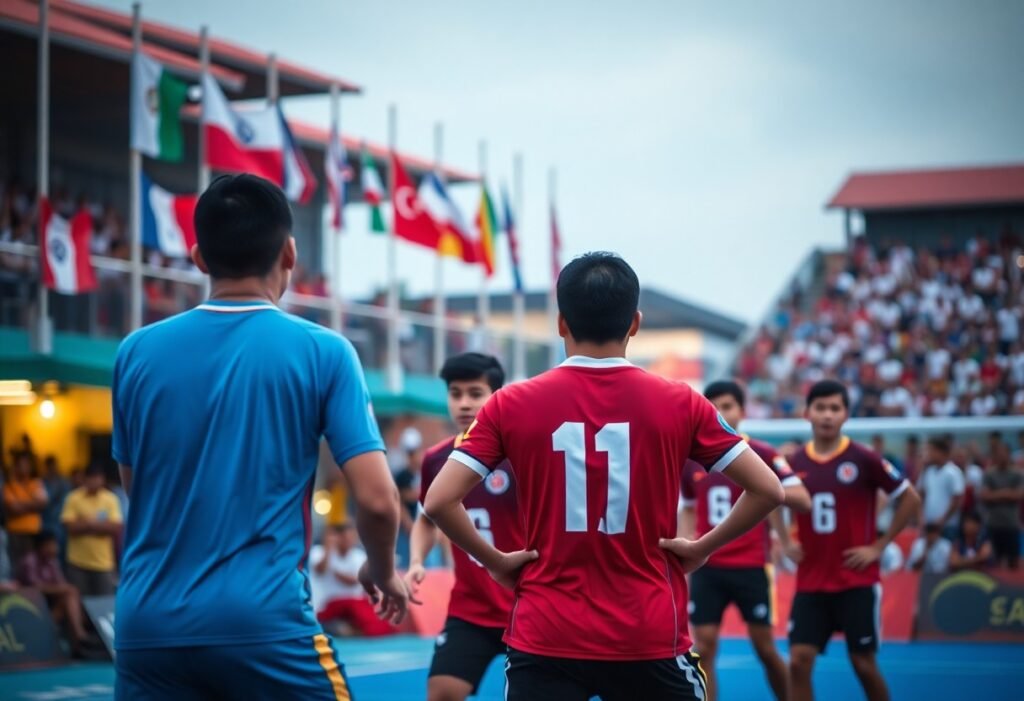Takraw is not just a sport; it has evolved into a cultural phenomenon deeply rooted in Southeast Asia. As you explore the top countries making waves in the Sepak Takraw scene in 2025, you’ll find nations like Thailand, Malaysia, and Indonesia leading the charge with their incredible skills and dedication. This blog post will guide you through the remarkable achievements of these countries, the impact of their players on international tournaments, and the strategic techniques that set them apart from the rest, ensuring you stay informed about the exciting world of Sepak Takraw.
Key Takeaways:
- Countries like Thailand, Malaysia, and Indonesia continue to showcase exceptional talent in sepak takraw, maintaining their status as global powerhouses in the sport by 2025.
- Emerging nations such as the Philippines and Vietnam are gaining momentum, with significant investments in training and development programs, hinting at a more competitive landscape.
- The International Sepak Takraw Federation is actively promoting the sport worldwide, leading to increased participation and fostering new talent in various countries.
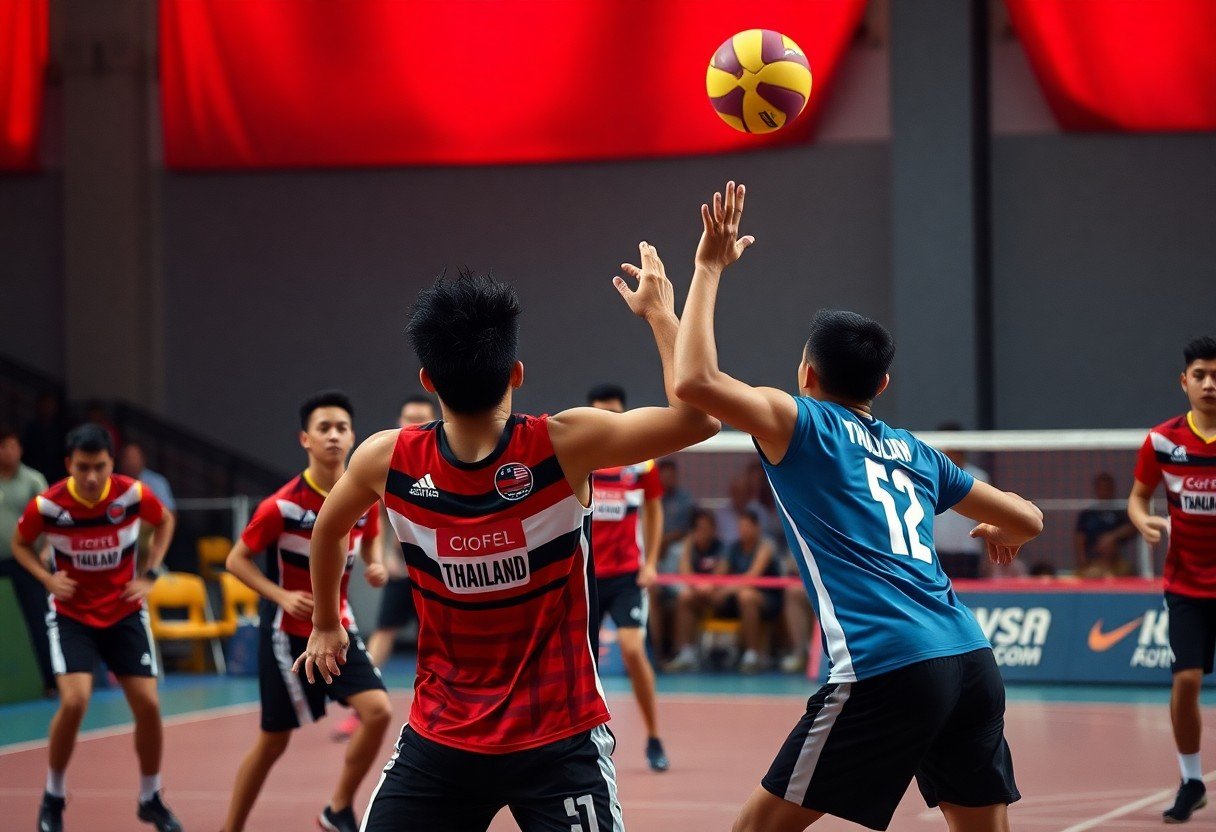
Historical Background of Sepak Takraw
While you explore the fascinating history of Sepak Takraw, you’ll uncover its roots that trace back centuries, reflecting a rich tapestry of cultural significance in Southeast Asia.
Origins and Evolution
The game of Sepak Takraw originated in the 15th century in Malaysia and Indonesia, evolving from traditional kicking games played by locals. It originally served as a form of entertainment, showcasing agility and skill, before transitioning into a structured sport recognized across the region.
Global Spread and Popularization
Below the surface, Sepak Takraw has gained international popularity since the mid-20th century, with its thrilling matches captivating audiences worldwide. You may notice its inclusion in various sporting events, progressively falling under the spotlight of global attention.
Also, various regional tournaments and championships have fueled its growth, allowing nations like Thailand, Malaysia, and Indonesia to showcase their talent. The sport’s inclusion in the Asian Games and the establishment of federations has amplified its visibility, encouraging participation from diverse countries. As more enthusiasts discover the excitement of Sepak Takraw, its fan base has expanded, drawing players from all corners of the globe.
Governing Bodies and Competitions
Against the backdrop of sporting governance, Sepak Takraw is organized by international bodies, most notably the International Sepak Takraw Federation (ISTAF). This organization plays a pivotal role in standardizing rules and promoting the sport worldwide.
Global interest in Sepak Takraw has continually increased, leading to the foundation of various competitions that provide a platform for players to compete at elite levels. With increasingly formalized structures, you can appreciate how these governing entities ensure fair play, uphold standards, and foster a sense of community among nations. This extensive framework motivates you not only to engage with the sport but also to support its future development on an international stage.
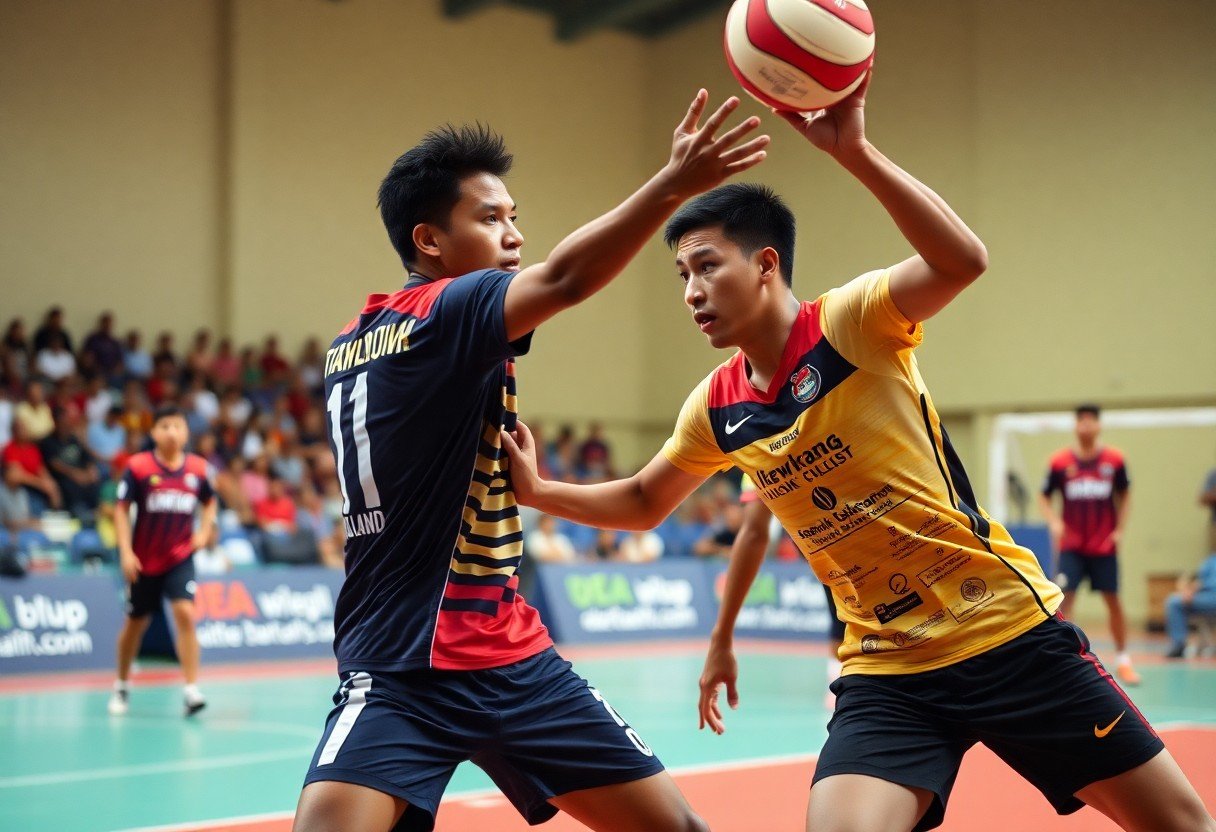
Key Attributes of Dominant Countries
Assuming you are keen on understanding what propels certain countries to the forefront of the Sepak Takraw scene in 2025, several key attributes play significant roles. These nations exhibit not only a passion for the sport but also strategic implementations across various sectors, including infrastructure, government support, and training programs. Check out this video by wearesepaktakraw – Sepak Takraw World Cup 2025: Best … to see some highlights.
Infrastructure Development
Beside the fervor for Sepak Takraw, effective infrastructure development establishes solid ground for training and competitive play. Countries excelling in the sport invest in state-of-the-art sports complexes and community courts, promoting accessibility and encouraging grassroots participation.
Government Support and Funding
Attributes such as strong government support and funding serve to bolster the sport significantly. When you have robust financial backing, it paves the way for better facilities, training, and competition opportunities.
Another noteworthy aspect is that this government funding often prioritizes resource allocation towards national teams and training programs, ensuring athletes receive the necessary support to perform at international levels. Without this financial commitment, sustaining a competitive edge on the world stage becomes a formidable challenge.
Training Programs and Facilities
Support for comprehensive training programs and facilities is another defining feature that sets dominant countries apart. This initiative fosters skill enhancement and nurtures top-tier talent, ensuring a consistent pipeline of players ready to compete.
Training opportunities often extend beyond just physical exercises; they include mental conditioning, strategic gameplay workshops, and exposure to international competitions. By investing in these multifaceted training environments, you empower players to elevate their performance and adapt to various competitive landscapes.
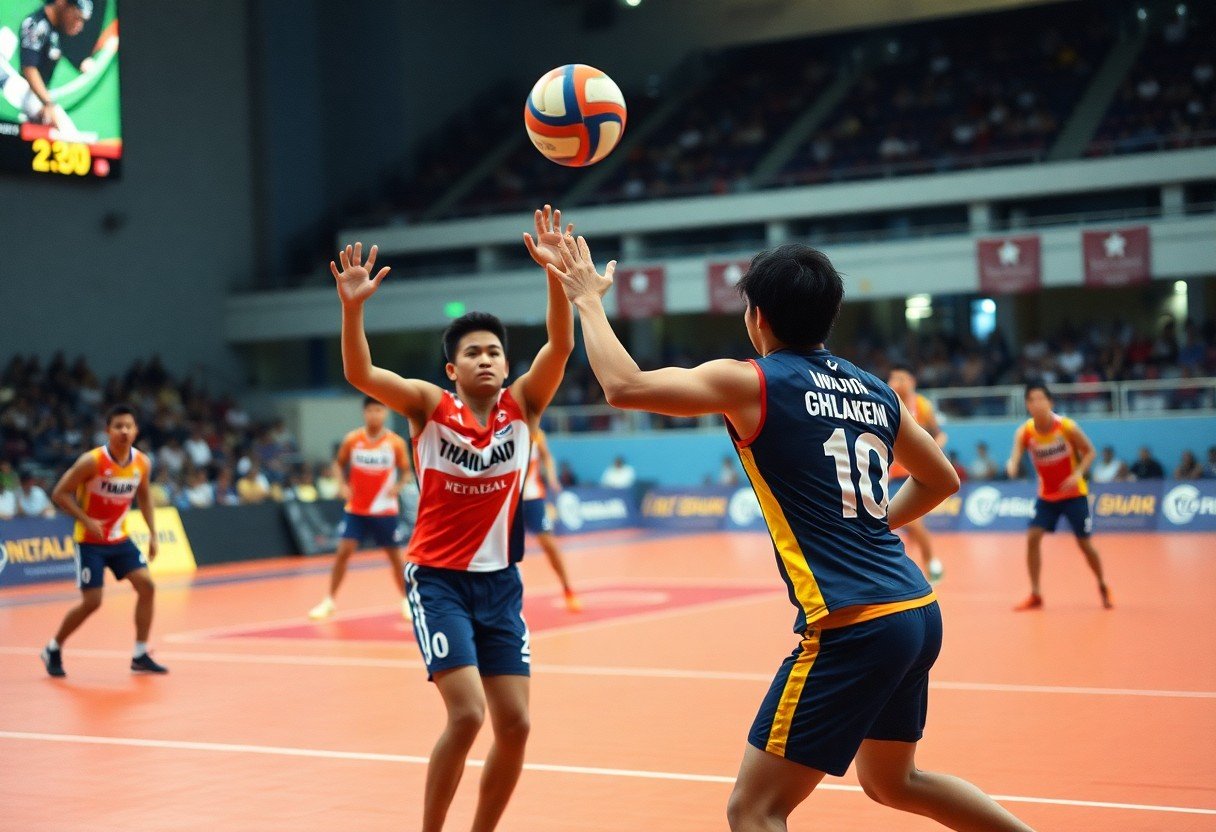
The Top Performing Countries in 2025
For anyone following the Sepak Takraw scene, 2025 has revealed some standout countries making significant strides in this exciting sport. Here are the top three nations dominating the landscape.
Thailand
One of the most *exceptional* powerhouses in Sepak Takraw, Thailand continues to showcase its *skills* and *talents* on the international stage. With a rich history in the sport, the Thai athletes are known for their *agility* and *technical finesse*, ensuring their place at the forefront of competition.
Malaysia
Thailand’s fierce rival, Malaysia, has made impressive *gains* in recent years. A well-structured training regimen and strong grassroots programs have helped elevate the skill level of athletes across the nation, allowing Malaysia to compete fiercely against its neighboring countries. The dedication to developing young talent is evident and has transformed the Malaysian team into a formidable opponent.
Indonesia
Coaches in Indonesia are increasingly focused on enhancing the *strategic aspects* of the game, which has led to a *notable improvement* in their national team’s performance. As the country invests more resources into developing Sepak Takraw, the athletes are becoming more adaptable and innovative on the court, making them a serious contender.
Further, Indonesia’s commitment to *revamping its training facilities* and incorporating modern techniques has resulted in *stellar* performances at international competitions. This approach has nurtured a new generation of players who demonstrate *creative play styles* and complement their athletic abilities with *sharp tactical awareness*, making Indonesia a country to watch in the coming years.
Factors Contributing to Success
Now, as you explore the dynamic world of Sepak Takraw, several factors contribute to the success of teams in the sport. These include:
- Strong Coaching and Training Programs
- National Support and Funding
- Talented Athletes and Player Development
- Cultural Significance and Community Involvement
- Media Coverage and Sponsorship Opportunities
The global landscape of Sepak Takraw is continuously evolving, and these elements play critical roles in achieving success.
Cultural Significance of Sepak Takraw
To truly appreciate Sepak Takraw, you must consider its deep-rooted cultural significance in various countries, particularly in Southeast Asia. The sport is often celebrated during local festivals and community events, making it an integral part of your cultural identity.
Community Engagement and Grassroots Initiatives
Significance lies in the way community engagement and grassroots initiatives foster local talent and enthusiasm for Sepak Takraw. These grassroots programs bring together young players and teach them the sport, ensuring a vibrant future for the game.
Considering the impact of these initiatives, you will find that many schools and local organizations are actively promoting Sepak Takraw. Events and training camps designed for youth not only enhance skills but also build a sense of belonging and pride within the community, nurturing the next generation of champions.
Role of Media and Sponsorship
Around the globe, the role of media and sponsorship in Sepak Takraw is expanding. Increased visibility through television broadcasts and social media platforms allows you to witness the growth and excitement surrounding the sport.
Community support for Sepak Takraw is also boosted by sponsorship deals that provide funding for teams, facilities, and events. This financial backing allows you to see higher levels of competition and encourages aspiring players to take part, ultimately enriching the sport’s ecosystem.
Challenges Facing Dominant Countries
Not all is smooth sailing for countries that currently dominate the sepak takraw scene. These nations face various challenges that could hinder their continued success and the development of the sport.
Emerging Competitors
With the rise of new talent and fresh strategies, emerging competitors are steadily closing the gap on traditionally dominant countries in sepak takraw. Nations that were once considered underdogs are investing in training and resources, becoming more competitive on the international stage.
Maintaining Consistency in Performance
One of the most significant challenges you will encounter as a dominant team is maintaining consistency in your performance. Top-tier countries must continually adapt their training methods and strategies to keep up with evolving gameplay tactics from challengers.
Emerging technologies and analytics in sports science can help identify areas for improvement. However, maintaining a winning mentality while fostering team cohesion is important. It is often a balancing act between youth development and keeping seasoned players fit and competitive for the long run.
Addressing Injuries and Player Welfare
On top of performance consistency, addressing injuries and ensuring player welfare is vital for your team’s long-term success. As the competition intensifies, the physical toll can increase, necessitating a robust framework for health management.
Hence, prioritizing player health through proper training regimens, nutrition, and medical support is imperative. Implementing comprehensive recovery programs can safeguard against injuries, ensuring that your athletes are in peak condition and ready to face the challenges ahead.
Future of Sepak Takraw
Unlike many traditional sports, the future of Sepak Takraw appears bright and full of potential. With its rich history and cultural significance in Southeast Asia, you can expect this dynamic sport to gain even more popularity worldwide, showcasing the athleticism and skill of its players.
Potential for Global Expansion
On the horizon, there is an increasing potential for global expansion of Sepak Takraw. As more countries recognize its exciting nature and unique gameplay, you may see the development of international leagues and tournaments, further elevating the sport’s profile beyond its traditional roots.
Technological Advancements and Training Methods
After years of reliance on conventional training techniques, the landscape of Sepak Takraw is evolving. With the integration of technology, players can access advanced training tools that monitor performance and enhance technique, giving you insights that were previously unattainable.
Even virtual reality and analytics are set to change the way you approach training for Sepak Takraw. Personalized coaching through data-driven feedback can help refine your skills, while digital platforms can connect you with expert trainers worldwide. These innovations not only help develop individual athletes but also streamline team strategies, making every match more competitive.
Anticipated Changes in Competitive Formats
By 2025, you can expect anticipated changes in competitive formats, as the sport adapts to attract a broader audience. The introduction of shorter matches and mixed-gender teams can make events more engaging and accessible for fans.
Consequently, the new formats will likely emphasize faster gameplay, enhancing excitement for viewers and encouraging more participation at all levels. These adaptation strategies aim to ensure that Sepak Takraw remains relevant and appealing, allowing you to fully engage with a sport that celebrates skill, agility, and teamwork. The evolution of competition formats will be pivotal in drawing new fans while maintaining the traditional spirit of Sepak Takraw.
Final Words
Presently, as you explore the evolving landscape of Sepak Takraw in 2025, you will find that Thailand, Malaysia, and Indonesia continue to lead the charge with their exceptional talent and rich history in the sport. These countries are not only enhancing their training programs but also investing in grassroots initiatives to cultivate future champions. As you witness their progress, you can appreciate how these nations maintain their dominance while inspiring other nations to join the competitive scene, transforming Sepak Takraw into a truly global sport.
FAQ
Q: Which countries are expected to lead the Sepak Takraw scene in 2025?
A: By 2025, countries such as Thailand, Malaysia, Indonesia, and the Philippines are anticipated to dominate the Sepak Takraw scene. These nations have rich histories in the sport, extensive training programs, and strong competitive leagues that cultivate top-tier talent.
Q: What factors contribute to a country’s dominance in Sepak Takraw?
A: Several key factors contribute to a country’s success in Sepak Takraw, including the availability of grassroots programs, government support for athletics, investment in training facilities, and participation in international competitions. Additionally, the cultural significance of the sport in these countries enhances interest and skill development among young athletes.
Q: How has international competition changed the Sepak Takraw landscape?
A: International competitions have elevated the standard of play and increased exposure for Sepak Takraw. Countries are now more competitive due to shared knowledge, coaching techniques, and strategies exchanged during tournaments. This environment encourages nations to invest more in developing their teams, raising the overall quality of the sport globally.
Q: What role does youth development play in the future of Sepak Takraw in these countries?
A: Youth development is vital for sustaining the growth of Sepak Takraw in the leading countries. Initiatives that engage children and young adults in training camps, school programs, and local tournaments help identify and nurture emerging talent. Successful youth programs ensure a steady pipeline of skilled players, vital for maintaining competitiveness on the world stage.
Q: What can be expected from global Sepak Takraw events in 2025?
A: In 2025, global Sepak Takraw events will likely showcase heightened competitiveness and thrilling matches, reflecting the growth and professionalism of the sport. With increased media coverage, sponsorships, and fan engagement, these events will not only promote the sport but also contribute to its development worldwide, allowing new nations to emerge as contenders.



